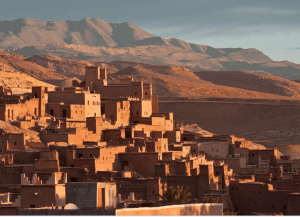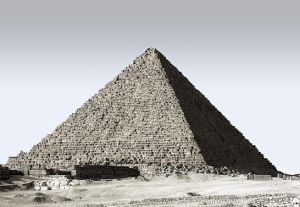HISTORY OF AFRICA
Human origins & migrations
You’ve probably heard the claim that Africa is ‘the birthplace of humanity’. But before there were humans, or even apes, or even ape ancestors, there was…rock. Africa is the oldest and most enduring landmass in the world. When you stand on African soil, 97% of what’s under your feet has been in place for more than 300 million years. During that time, Africa has seen pretty much everything – from proto-bacteria to dinosaurs and finally, around five to 10 million years ago, a special kind of ape called Australopithecines, that branched off (or rather let go of the branch), and walked on two legs down a separate evolutionary track.
This radical move led to the development of various hairy, dim-witted hominids (early men) – Homo habilis around 2.4 million years ago, Homo erectus some 1.8 million years ago and finally Homo sapiens (modern humans) around 200,000 years ago. Around 50,000 years later, somewhere in Tanzania or Ethiopia, a woman was born who has become known as ‘mitochondrial Eve’. We don’t know what she looked like, or how she lived her life, but we do know that every single human being alive today (yup, that’s EVERYONE) is descended from her. So at a deep genetic level, we’re all still Africans.
The break from Africa into the wider world occurred around 100,000 years ago, when a group numbering perhaps as few as 50 people migrated out of North Africa, along the shores of the Mediterranean and into the Middle East. From this inauspicious start came a population that would one day cover almost every landmass on the globe.
Around the time that people were first venturing outside the continent, hunting and gathering was still the lifestyle of choice; humans lived in communities that rarely exceeded a couple of hundred individuals, and social bonds were formed to enable these small bands of people to share food resources and hunt co-operatively. With the evolution of language, these bonds blossomed into the beginnings of society and culture as we know it today.
The first moves away from the nomadic hunter–gatherer way of life came between 14,000 BC and 9500 BC, a time when rainfall was high and the Sahara and North Africa became verdant. It was in these green and pleasant lands that the first farmers were born, and mankind learned to cultivate crops rather than following prey animals from place to place.
By 2500 BC the rains began to fail and the sandy barrier between North and West Africa became the Sahara we know today. People began to move southwest into the rainforests of Central Africa. By this time a group of people speaking the same kind of languages had come to dominate the landscape in Africa south of the Sahara. Known as the Bantu, their populations grew as they discovered iron-smelting technology and developed new agricultural techniques. By 100 BC, Bantu peoples had reached East Africa; by AD 300 they were living in southern Africa, and the age of the African empires had begun.


